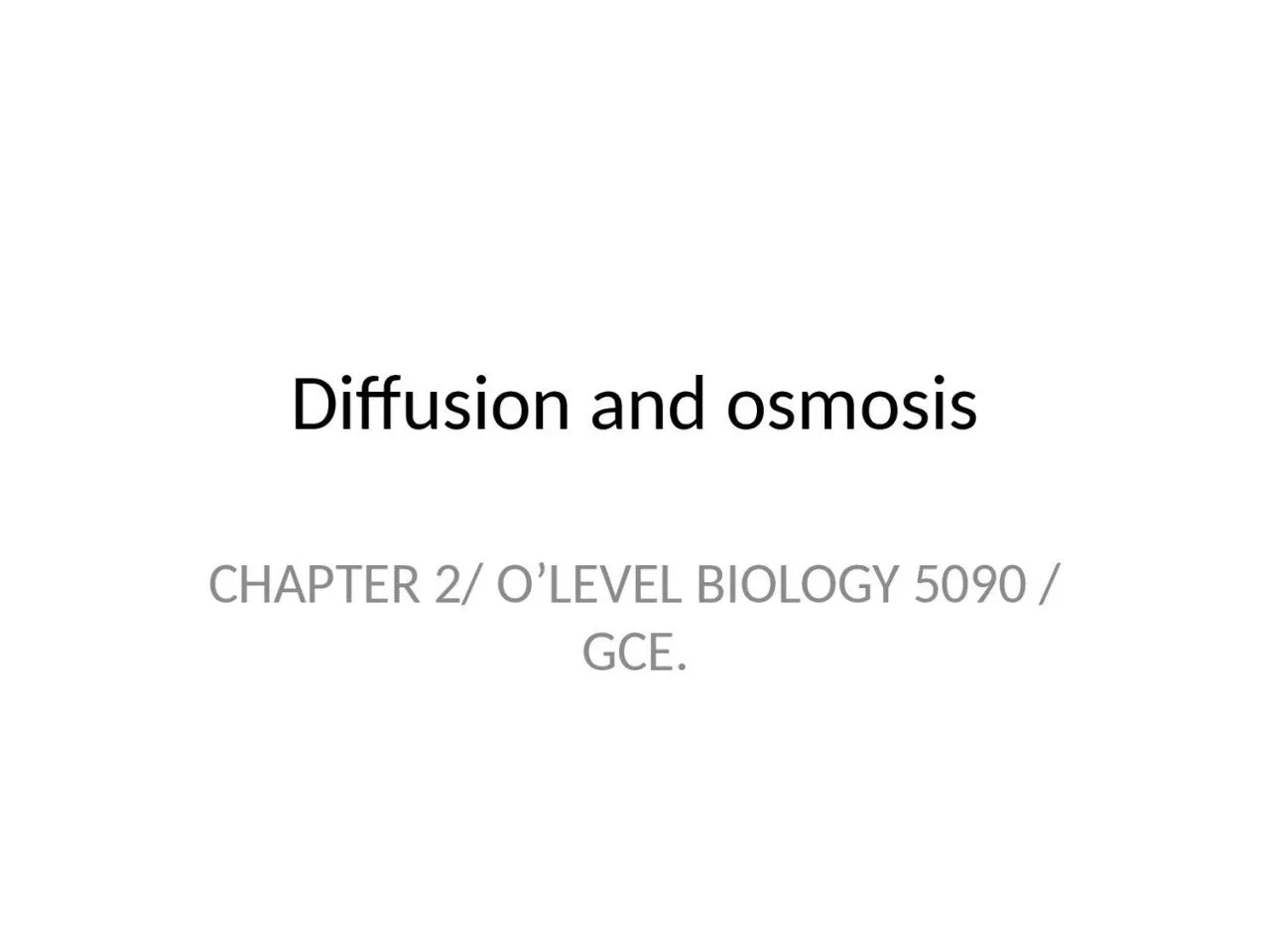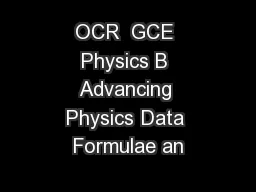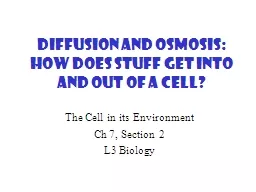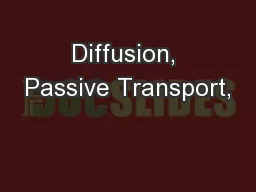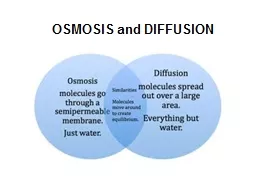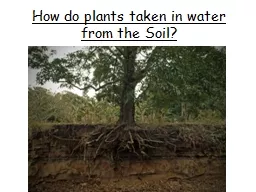PPT-Diffusion and osmosis CHAPTER 2/ O’LEVEL BIOLOGY 5090 / GCE.
Author : SultrySiren | Published Date : 2022-08-03
2 Diffusion and osmosis Content 21 Diffusion 22 Osmosis 23 Active transport Learning outcomes Candidates should be able to a define diffusion as the movement of
Presentation Embed Code
Download Presentation
Download Presentation The PPT/PDF document "Diffusion and osmosis CHAPTER 2/ O’LEV..." is the property of its rightful owner. Permission is granted to download and print the materials on this website for personal, non-commercial use only, and to display it on your personal computer provided you do not modify the materials and that you retain all copyright notices contained in the materials. By downloading content from our website, you accept the terms of this agreement.
Diffusion and osmosis CHAPTER 2/ O’LEVEL BIOLOGY 5090 / GCE.: Transcript
Download Rules Of Document
"Diffusion and osmosis CHAPTER 2/ O’LEVEL BIOLOGY 5090 / GCE."The content belongs to its owner. You may download and print it for personal use, without modification, and keep all copyright notices. By downloading, you agree to these terms.
Related Documents

